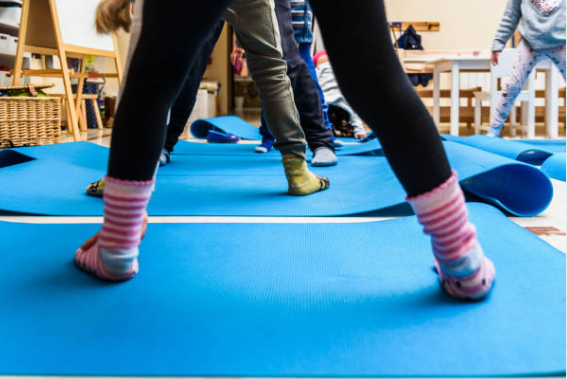Peer Review: Daily Physical Activity Implementation: From Policy to Practice

Previously published in Volume 83, Issue 2
Abstract
In Canada, three provinces and one territory have Daily Physical Activity (DPA) policies in their respective curriculum policies. While focusing on a 2016 study that examined whether or not school boards and individual schools in Alberta and BC present DPA policy information on their websites, it was found that the majority of school websites are not being utilized as a means to disseminate DPA initiative information. With this knowledge, we contend that future research is required to understand how the level of dissemination of the DPA policy can be enhanced throughout schools. In addition to the dissemination of the ‘policy’ itself, we believe more resourceful tools are required to prepare teachers more fully to implement DPA successfully. Building on this research, we offer suggestions for ways that school boards and individual schools to effectively support DPA implementation on their respective websites.
Daily Physical Activity: Background
Although it is recommended that children and youth participate in a minimum of 60 minutes per day of moderate-to-vigorous physical activity (MVPA) (Tremblay et al., 2011), most children in North America are not physically active enough to achieve health benefits (ParticipACTION, 2016; Tremblay et al, 2011). Canada, like many other developed nations, has an overweight and obesity epidemic as currently more than one quarter of all children in Canada are overweight or obese (ParticipACTION, 2016). This has spurred three Canadian provinces and one territory (e.g., Alberta, British Columbia [BC], Ontario, Yukon) to introduce a Daily Physical Activity (DPA) initiative into their school systems. By mandating 20 or 30 minutes of DPA, schools within Alberta, BC, Ontario, and Yukon Territory are expected to ensure that all students participate in a minimum number of minutes of DPA. Since its inception, Alberta Education (2008) reported that overall levels of DPA in Alberta schools increased since the DPA initiative has been implemented. However, the implementation of DPA within these provinces and territory has not been without struggle or resistance (Hickson, Robinson, Berg, & Hall 2012).
With it being unclear in Alberta and BC if or how school boards have developed procedures to disseminate DPA requirements to their teachers, a recent study conducted by Weatherson, Bradford, Berg, and Sloboda (2016) systematically examined if and how the DPA policy is recognized amongst varying school boards and schools across Alberta and BC. In particular, this research team explored whether DPA policy information is present (and to what degree) on school board and a sub-sample of individual school websites in Alberta and BC (Weatherson et al., 2016).
While asking research questions such as, "How do school boards and, more specifically, schools in Alberta and BC recognize DPA initiatives on their websites?" Weatherson et al., 2016, employed a content analysis (Kondracki, Wellman, & Amundson, 2002) of school board and a sub-sample of individual school websites to explore if and how DPA information is presented. Following a scan of all school board websites in Alberta and BC (n = 58; n = 60, respectively) and of a stratified random sample of individual school websites from each province (n = 65 [Alberta]; n = 50 [BC]), a quantitative content analysis explored how DPA information was presented on school and school board websites (Weatherson et al., 2016).
The results from Weatherson et al. (2016) noted that DPA policy requirements in Alberta and BC differ with respect to grade level. However, similar policies are held with respect to time, PA type, and scheduling/delivery method (see Table 1). Schools from Kindergarten to Grade 9 in Alberta and BC are required to provide students with 30 minutes of DPA at school which may occur during instructional and/or non-instructional time (e.g., during recess or lunch; Alberta Education, 2015; BCED, 2011a; BCED, 2011b). Both Ministries of Education have contended that there are no specifications as to what level of effort students must engage in while being physically active (e.g., MVPA). However, in areas such as flexibility, strength, and endurance, activities should vary. Alberta Education (2015) stated that “DPA should be offered in as large a block of time as possible but can be offered in time segments adding up to the minimum 30 minutes per day; e.g., two 15-minute blocks of time for a total of 30 minutes” (para. 6). Hence, in both Alberta and BC, schools are afforded the flexibility to decide how to implement and fulfill DPA.
AB, Alberta; BC, British Columbia; K, kindergarten; MVPA, moderate-to-vigorous physical activity; Instructional means DPA occurs during class time; Non-instructional means DPA occurs outside of class (e.g., before or after school, recesses)
After reviewing the policy statements for each province and scanning provincial school websites for DPA content, (Weatherson et al., 2016) found that the majority of school boards and individual schools are not using websites as a means to disseminate DPA initiative information. Few school boards or individual schools in Alberta and BC have included DPA in their own formal written policies. Unfortunately, DPA citations on websites provide insufficient information regarding the policy’s requirements for time, type, intensity, and scheduling (Weatherson et al., 2016).
Schools with written policies and practices for physical activity have students that are more physically active than those without such policies (Faulkner et al., 2014). Therefore, it is unfortunate that most schools examined within this study did not incorporate DPA into their formal written policies or within their administrative procedures. Doing so would demonstrate a level of communication about, monitoring of and autonomy for the DPA policy, and potentially lead to greater implementation of the policy by teachers (Weatherson et al., 2016). Further, Olstad et al. (2015) examined how DPA policies were disseminated and implemented at a provincial level. It was found that a lack of research was conducted regarding the implementation and impact of DPA policies. According to DeGroff and Cargo (2009), implementation is turning policy into action, and includes the progress and process of how this occurs and the resulting products (Taylor, McKenna, & Butler, 2010). To ensure implementation moves seamlessly through various levels (e.g., provincial/state level to a local level), policy requirements must be understood by those who are required to deliver the policy, and in doing so, higher policy adoption rates may result (Pan Canadian Joint Consortium for School Health, 2010).
Future research should examine if there is a difference in implementation status and impact of DPA in schools that incorporate the provincial policy into their own school policies compared to schools that do not attend to this practice. In addition to the policy, dissemination must also include practical and meaningful ways to incorporate DPA effectively throughout the school day. Sharing developmentally appropriate activities to help teachers deliver DPA in the classroom, for instance, is one way websites can support students with additional physical activity time.
According to Washburn and Sinelnikov (2016), well-designed websites are a means for communication, beneficial for student learning, and encourage students to take ownership of their health. Rink, Hall, and Williams (2010) contended that websites are an excellent source for promoting DPA activities and programs within the school environment. Further, Hill, Tucker, and Hannon (2010) noted that creating effective websites is meaningless unless they are utilized. Websites should include features that will provide important information and encourage users to return to the website on an ongoing basis (Hill et al., 2010). For DPA, providing links to the provincial curricula, research regarding the benefits of physical activity for children and youth, and to websites with resources to support teachers and administrators with DPA implementation are encouraged. As well, providing information to local community resources such as youth sports leagues, dance, gymnastic and martial arts centres, etc. should be included.
Concluding thoughts
In Alberta and BC schools, the DPA policy was mandated to help students accumulate more physical activity during the school day in order to help them develop physically active, healthy lifestyles. Because it has become apparent that issues such as childhood obesity, physical inactivity, sedentary lifestyles, etc. are not disappearing, we contend that teachers across Alberta and BC can benefit from additional support for successful DPA implementation. While focusing on a recent study that examined whether or not school boards and individual schools in Alberta and BC present DPA policy information on their websites, Weatherson et al. (2016) found that the majority of school websites are not being utilized as a means to disseminate DPA initiative information. With this knowledge, future research is required to understand how the level of dissemination of the DPA policy can be enhanced throughout Alberta and BC schools. However, in addition to the dissemination of the ‘policy’ itself, there must be ways to assist teachers more fully to actually carry out DPA within the school day, without having DPA simply replace physical education instruction. Further, providing information on websites that help improve communication and learning regarding DPA policies will assist in enhancing the understanding of why DPA is needed in schools today.
References
Active Healthy Kids Canada. (2014). Is Canada in the Running? The 2013 Active Healthy Kids Canada Report Card on Physical Activity for Children and Youth. Toronto: Active Healthy Kids Canada. Retrieved fromhttp://dvqdas9jty7g6.cloudfront.net/reportcard2014/AHKC_2014_ReportCard_ENG.pdf
Alberta Education. (2008). Daily Physical Activity Survey Report. Retrieved from http://education.alberta.ca/media/756341/dpasurveyreport.pdf
Alberta Education. (2015). Daily Physical Activity Initiative. Retrieved from https://archive.education.alberta.ca/teachers/resources/dpa/
British Columbia Ministry of Education. (2011a). Health and Physical Activity. Retrieved from https://www.bced.gov.bc.ca/dpa/dpa_requirement.htm
British Columbia Ministry of Education. (2011b). Daily Physical Activity. Retrieved from http://www2.gov.bc.ca/gov/content/education-training/administration/legislation-policy/publicschools/daily-physical-activity
DeGroff, A., & Cargo, M. (2009). Policy implementation: Implications for evaluation. In J.M. Ottoson & P. Hawe (Eds.), Knowledge utilization, diffusion, implementation, transfer, and translation: Implications for evaluation. New Directions for Evaluation, 124, 47-60.
Faulkner, G., Zeglen, L., Leatherdale, S., Manske, S., & Stone, M. (2014). The Relationship between School Physical Activity Policy and Objectively Measured Physical Activity of Elementary School
Students: A Multilevel Model Analysis. Archives of Public Health, 72(20):1-9. Retrieved from http://www.ncbi.nlm.nih.gov/pmc/articles/PMC4082160/
Hickson, C., Robinson, D., Berg, S. & Hall, N. (2012). Active in the North: School and Community Physical Activity Programming in Canada. International Journal of Physical Education 2(12):16-30.
Hill, G.M., Tucker, M., & Hannon, J. (2010). An evaluation of secondary school physical education websites. Physical Educator, 67(3), 114-127.
Kondracki, N.L., Wellman, N.S., & Amundson, D.R. (2002). Content Analysis: Review of Methods and their Applications in Nutrition Education. Journal of Nutrition Education and Behavior, 34(4):224 230. Retrieved from http://www.sciencedirect.com/science/article/pii/S1499404606600973
Olstad, D.L., Campbell, E.J., Raine, K.D. & Nykiforuk, C.I.J. (2015). A multiple case history and systematic review of adoption, diffusion, implementation and impact of provincial daily physical activity policies in Canadian schools. BioMed Central Public Health, 15, 385-426.
Pan Canadian Joint Consortium for School Health. (2010). Stakeholder Engagement for Improved School Policy: Development and Implementation. Canadian Journal of Public Health, 101(2): S20 S23. Retrieved from http://journal.cpha.ca/index.php/cjph/article/viewArticle/1913
ParticipACTION. (2016). The ParticipACTION Report Card on Physical Activity for Children and Youth. Retrieved from http://www.participaction.com/en-ca/thought-leadership/report-card/archive
Rink, J.E., Hall, T.J., & Williams, L.H. (2010). Schoolwide physical activity: A comprehensive guide to designing and conducting programs. Champaign, Ill: Human Kinetics.
Taylor, J.P., McKenna, M.L., & Butler, G.P. (2010). Monitoring and evaluating schools nutrition and physical activity policies. Canadian Journal of Public Health, 101(2), S24-S27. Retrieved from http://www.jstor.org/stable/41995353
Tremblay, M.S., Warburton, D., Janssen, I., Paterson, D.H., Latimer, A.E., Rhodes, R.E., Kho, M.E., Hicks, A., LeBlanc, A.G., Zehr, L., Murumets, K., & Duggan, M. (2011). New Canadian Physical Activity Guidelines. Applied Physiology, Nutrition, and Metabolism, 36(1):36-46. Retrieved from http://www.nrcresearchpress.com/doi/abs/10.1139/H11-009#.Va0mNbe05b0
Washburn, N., & Sinelnikov, O.A. (2016). Physical education websites and webpages in the state of Alabama: Are we painting a positive self-portrait? Physical Educator, 73(2), 193-212.
Weatherson, K., Bradford, B., Berg, S., & Sloboda, S. (2016). Dissemination of a daily physical activity policy on school websites in Alberta and British Columbia. Revue phenEPS/PHEnex Journal, 8(2). 1-12.









